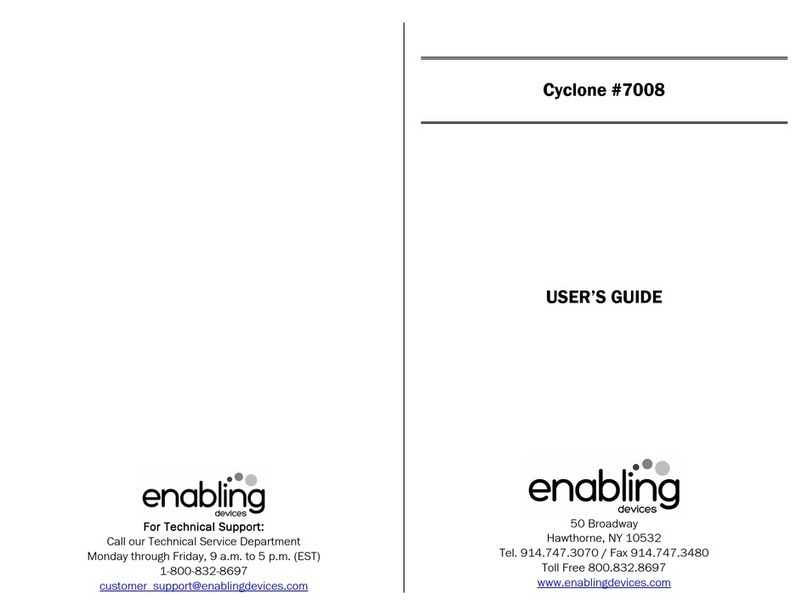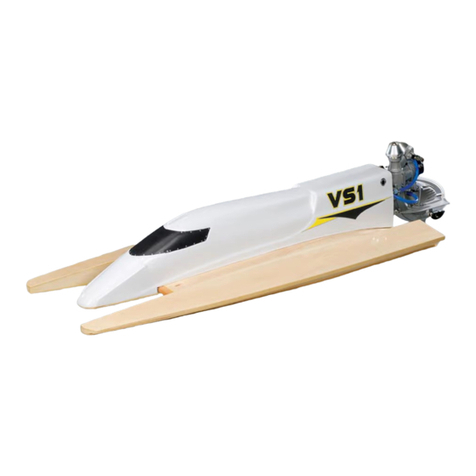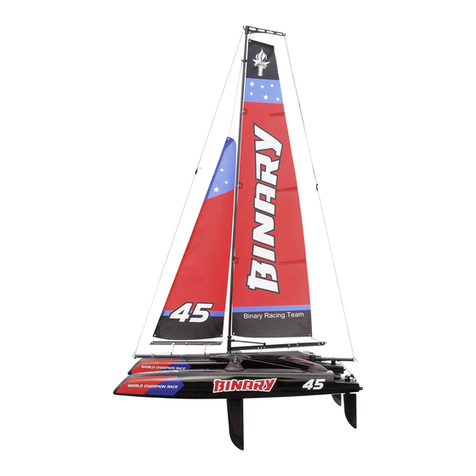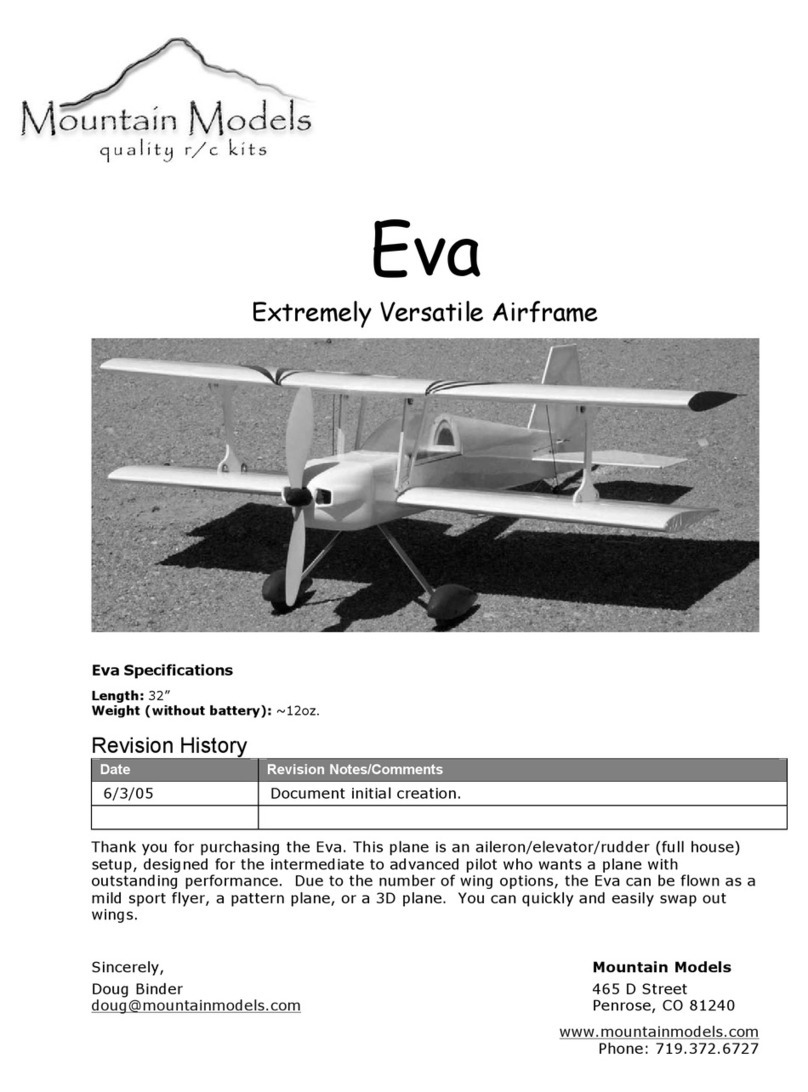CLASS IX 821A PWM User manual

1
MODEL 821A PWM MODEL RAILROAD THROTTLE
The model 821A PWM model railroad throttle has been designed for use with any scale DC
model railroad system. Like it’s predecessor the model 820, this throttle has been designed to
provide unparalleled performance in both switching and mainline usage. It is easily installed and
requires no maintenance. Please follow these instructions for installation and modifications to
enhance your operational enjoyment.
INSTALLATION
The model 821A needs a supply voltage source to work. The supply voltage can be 12 to 24 volts
AC or DC. The ability to operate from DC power source makes this throttle especially attractive
for outdoor operating situations with battery supply (eg. automotive batteries). Applying voltages
above the recommended limits can damage the throttle. Voltages below the recommended limits
may result in erratic or unreliable operation. The power supply must be able to supply enough
current to allow reliable operation to your layout. A supply rated for 3 amps is recommended,
however, you can get away with less if you don’t expect to draw the 3 amp maximum. Be warned
though, a power supply rated for less than 3 amps can be permanently damaged if the output of
the throttle is shorted during operation. Be sure to fuse the power supply’s output terminals to
protect the supply. If you are unsure of how to do this consult an electrician or an electronics
technician. Connect the supply voltage to terminals 5 and 6.
If you have a common rail blocked system and plan to use more than one throttle an individual
power supply must be used for each throttle. If you have a fully isolated blocked system (both
rails gapped) multiple throttles can be operated from one supply source. Again, be sure the power
supply is capable of supplying ample current to operate all of the throttles.
The large aluminum heat sink can become very hot during normal operation and will become
especially hot in the case of overloads caused by a short applied to the tracks or throttle output
terminals. The printed circuit assembly should be mounted so that adequate air flow is available
to help cool the heat sink. Do not touch the heat sink unless you are sure it has not become too
hot to touch.
The printed circuit assembly can be mounted with #6 hardware at each of the four corners of the
board. If you plan to mount the PCB on a metal surface spacers should be used in order that the
soldered side of the circuit board clears at least ¼” above the mounting surface.
ALWAYS DOUBLE CHECK YOUR CONNECTIONS TO ENSURE SAFETY !!!
TRACK CONNECTIONS
The throttle’s output appears at terminals 7 and 8 connect to the track. Be sure your connections
are solid and that wires are not frayed. Use stranded 18AWG minimum insulated wire and make
sure the insulation is not cracked or compromised in any way that will cause a short circuit.
CONTROL HANDSET CONNECTIONS
Refer to figure 1 for handset connections to the printed circuit board. If you are using the
optionally available 851HS handset follow the color code beside figure 1. If you plan to construct
your own handset follow the connections as per the diagrams included.

2
figure 1 –connections to PCB ass’y
CONNECTIONS TO TERMINALS
1 - speed control voltage input
- 851HS handset yellow or white
2 - direction control voltage input
- 851HS handset green
3 -12VDC handset supply
- 851HS red
4 - handset ground
- 851HS black
5 - AC/DC supply terminal
6 - AC/DC supply terminal
7 - track voltage
8 - track voltage
Note - Terminals are numbered on the
bottom of the PCB assembly
HANDSET DIAGRAMS
These schematic diagrams outline different handset configurations should you decide to construct
your own handset. The standard configuration of the 851HS is shown in figure 2. Variations of
this configuration are shown in figure 3. When constructing your own handset be sure to follow
standard electronics soldering practices. Always use a clean soldering iron and NEVER use acid
core solder or acid flux. Inspect your work to ensure solder joints are clean, smooth and shiny
and that connections go to where they are intended.
Part values shown are not “carved in stone”. Feel free to experiment with these values. The only
caveat is that the “speed” control’s value must not be below 5KOhm or above 50KOhm and it
must also be a “linear taper” potentiometer.
figure 2- 821HS standard handset configuration

3
figure 3- 821HSX fully featured handset configuration
The configuration shown in figure 3 encompasses the many differentiations to the handset
controls. Feel free to experiment by adding or deleting functions. Experiment with the values of
the components and observe their effect on the operation of the throttle. When you have decided
on the final configuration, choose a suitable enclosure and plan the control and switch placement
for comfortable operation. One-handed control is very desirable and your handset should be
maximized with this goal in mind.
ADJUSTMENTS
The trimpot labeled “VOLTS” is located within the heat sink area. This should be adjusted to your
desired full speed voltage. This can be done by running a locomotive up to the full speed setting
of the throttle and adjusting until the optimal full speed is established. The “FREQ” adjustment is
factory set at 60Hz and shouldn’t need to be adjusted unless you have a “stubborn” locomotive
that may be more responsive at a different setting. Run the locomotive at very low speed and
then adjust for maximum controllability in conjunction with the speed control at low speeds.
Ken Stapleton
167 Lake St
St Catharines, ON
L2R 5Y6
CANADA
(905) 641-5256
World Wide Web –http://www3.sympatico.ca/kstapleton3/Index.html
Table of contents
Popular Toy manuals by other brands

Mega Bloks
Mega Bloks HALO 97270 manual

LEGO
LEGO 40158 PIRATES Assembly guide
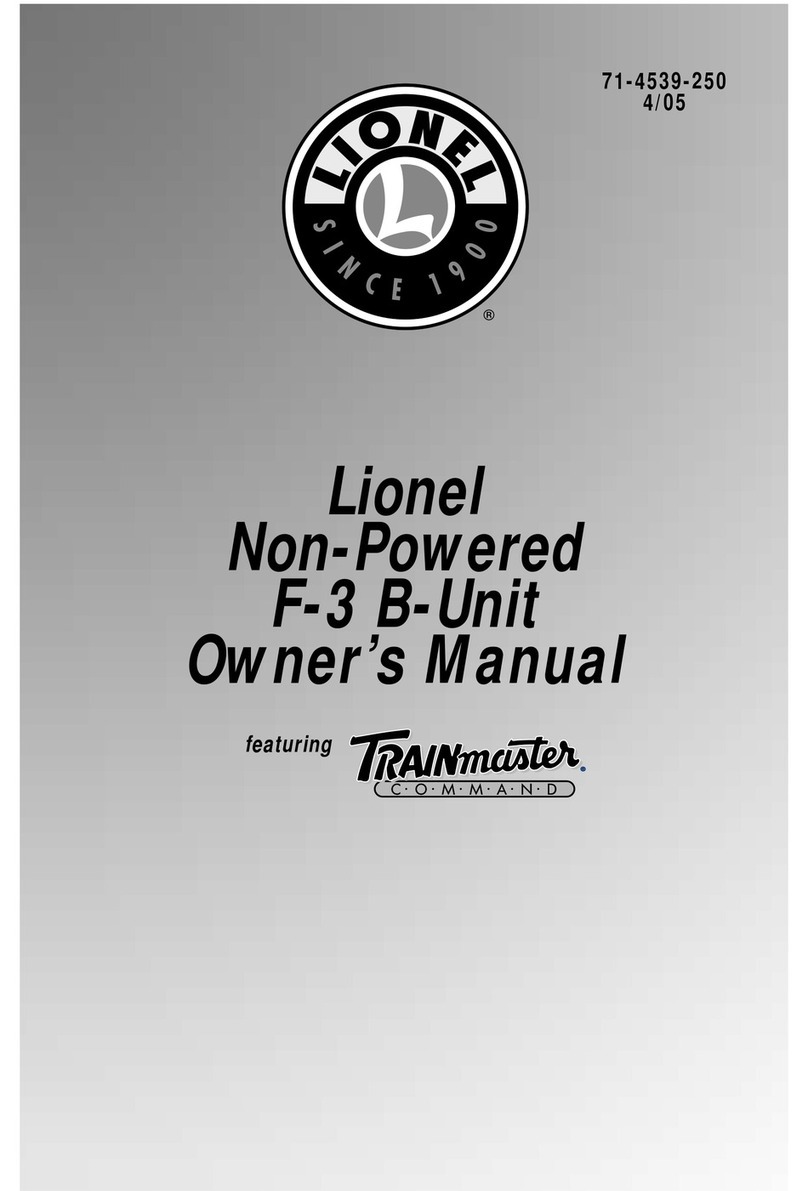
Lionel
Lionel 2343c Non-PoweredF-3 B-Unit owner's manual

Lionel
Lionel 2-8-4 Berkshire Locomotive and Tender owner's manual

Emax
Emax Yin Yan User instruction
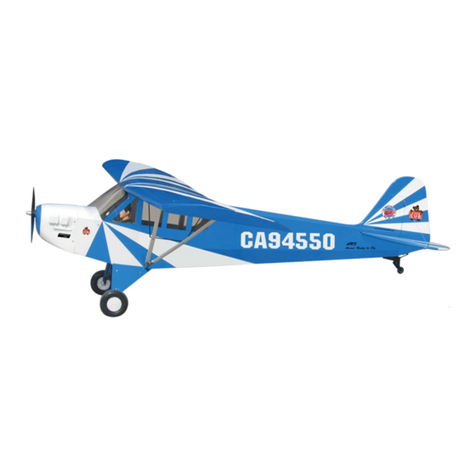
The World Models Manufacturing
The World Models Manufacturing A186C instruction manual




